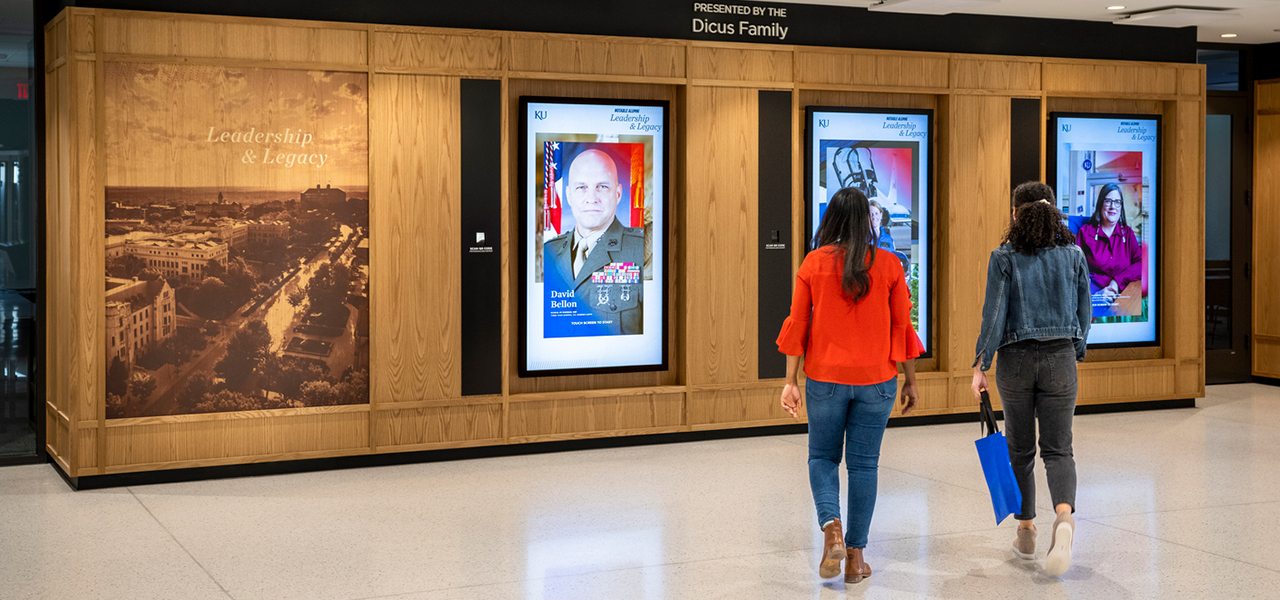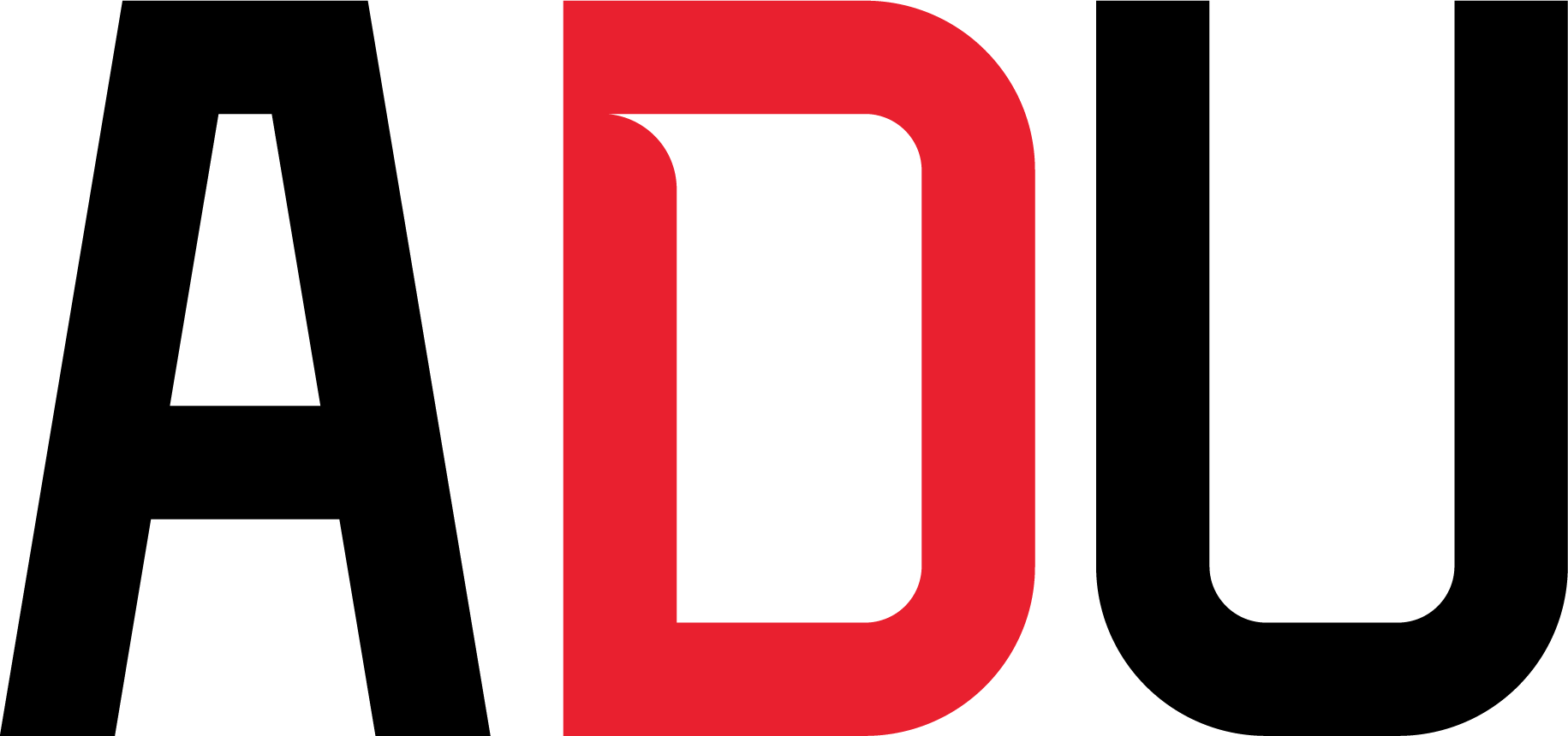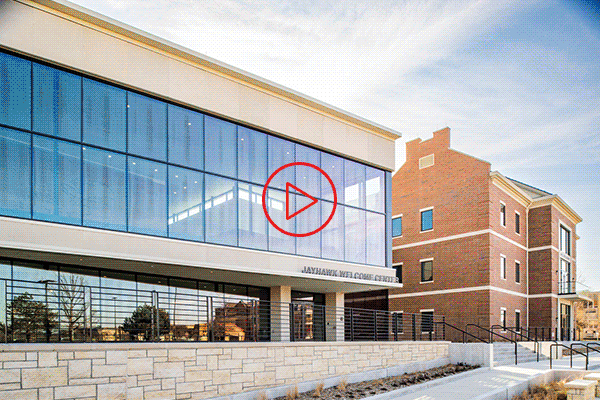The recruiting race has never been more complicated in college athletics and higher education in general. Universities are facing a declining supply of potential candidates while athletic departments are dealing with recruits simultaneously weighing issues of competitive success, championship culture and world-class facilities, NIL options, academic support and post-collegiate professional playing opportunities — and that’s before a student-athlete even has the chance to evaluate that ever-elusive feeling that the university experience is the right “fit.” So, why not work together?
That’s the decision the University of Kansas made in creating the Jayhawk Welcome Center, a collaborative ideation, design and execution process. The stakeholders included the KU Alumni Association, University Leadership, and KU Athletics, as well as Helix Architecture + Design, McCownGordon Construction, and Dimensional Innovations (DI), an experience design, build and tech firm. This facility is one each constituency hopes will bolster their success in the recruiting landscape by tapping into the look and feel of a Jayhawk student — or student-athlete — experience.
The Experts:
Douglas A. Girod, Chancellor – University of Kansas
Heath Peterson, President – KU Alumni Association
Jason Booker, Deputy AD for External Affairs and Revenue Generation – Kansas Athletics
Drew Berst, Executive Director – Dimensional Innovations
What was the initial vision for the Jayhawk Welcome Center, and why was student recruitment ultimately at the forefront of this facility?
DG: Early on in talking with Heath Peterson and the Alumni Association, the board came forward with a creative idea; they were contemplating remodeling their facilities, but they pivoted and said, how can we help the university? What can the Alumni Association do to help the university be successful well into the future? And as we started those conversations and discussed the challenges, [including the topic of] enrollment and recruitment efforts to the importance of the campus visit, this vision hatched of being able to create the launch spot for campus visits and doing it in a way that nobody else had ever done it before.
Alignment is a buzzy concept in college athletics; how did the collaboration between various stakeholder groups culminate in creating the Jayhawk Welcome Center?
HP: Alignment begins with authentic relationships, strong communication and a commitment to thinking more broadly. The KU Alumni Association had needs to expand our physical space to accommodate an alumni base that has grown by 40% since we opened our doors in 1983. Concurrently, the university was evaluating how it could modernize its visitor center to reshape the first impression of KU. We crafted a vision around connecting the future, present and past to help us recruit the next generation of Jayhawks. The team at DI was instrumental in guiding key stakeholders through an inclusive exercise to frame the storytelling experience.
DB: This is a project led by the KU Alumni Association (that also happens to be an independent association) with the full support of the Chancellor, Administration, Endowment, and the Athletic Department. At many universities, these groups don’t always work together. But at KU, they all saw the bigger picture and shared a desire to showcase the university in a forward-thinking way.
Why was it important for Athletics to be involved in developing the Jayhawk Welcome Center?
JB: We have maintained a great partnership with the KU Alumni Association. It was essential to showcase the connectivity across campus and how the association and welcome center is an asset for athletics and our entire campus community. Members of Rock Chalk Video, including Mike Lickert; our creative services team led by Douglas Shepherd; and Booth Family Hall of Athletics Curator Abbi Craig, were all a part of helping tell the athletics story in the new welcome center space. This includes digital installations to highlight the gameday atmosphere at football and basketball games, as well as outfitting and shining a light on the All-American Room, showcasing individual accomplishments in the space.
HP: The student-athlete recruitment experience, a lot of times, it’s focused on a particular sport. It may not provide as broad a view of the institution as a whole. The ability for a recruit to get a sense of the community they’re joining here at KU and provide a curated experience that says, hey, this is amazing space outside of your sport… That’s a tremendous advantage for our athletics department.
What were some key considerations for the team as you were developing the experience journey?
HP: If you think about showcasing what it means to be a Jayhawk, that could mean something totally different, depending on your generation and the stage of life you’re in. We had a fruitful exercise with campus leaders and the team at DI. We spent almost an entire day talking about that very question: What does it mean to be a Jayhawk? And how do we tell this story effectively? As you enter the space, we wanted there to be this wow factor that was highly personalized by leveraging technology.
How can on-campus spaces such as the Jayhawk Welcome Center differentiate KU Athletics in terms of athlete recruitment, current student-athlete experience and alumni/community engagement?
JB: It is critical to showcase the overall student-athlete experience during their time at KU and key in on the support system and Jayhawk network for post-graduation opportunities. To show real stories of the impact our alumni are making in business and respective communities helps tell a bigger story of what it means to be a Jayhawk and why KU may provide a different connectivity experience than other universities.

How can immersive technology make an impact on student and student-athlete recruitment?
DB: We enhance their emotional experience. The reason we make decisions as humans, in general, is through emotion. Our goal is to allow someone to see or feel themselves at that university. And we know statistically that campus visits have never been more important (In an Art&Science Group LLC survey, 65% of students indicated the campus tour was the most influential factor in their collegiate decision.)
Allowing prospective students to visit this campus (and space) and envision themselves at this university, we know there’s a really good chance that they will commit to that school. The key for DI was learning what differentiates KU from other universities based on insights, content curation and data. Making sure it was all amplified.
How are you measuring the impact of the Jayhawk Welcome Center on the university’s overall mission and goals?
DB: There are direct stats KU can pull over time – a ratio of visits to enrollment, how many prospects chose KU… You can also tie this to visits, donor support and/or Alumni Association signups. If we know who visited the building, we can dig deeper into what experiences they interacted with, and for how long.
HP: This project connects to and impacts various aspects of the university’s strategic plan. It will position us to grow enrollment by winning the on-campus visit and enhance the student experience through student leadership opportunities, career networking events, and inclusive programs that reach the broader student population… We’ve moved from a static experience to a vibrant tech-forward experience that generates an incredible amount of pride. The impact of the project will be measurable and immeasurable. We have a vehicle to tell the KU story in a modern, relevant way to various stakeholders.
What does it mean to have a competitive advantage in collegiate recruiting today?
HP: We know the campus visit is among the most important factors in college choice. Families make their college choice based on rational drivers (cost, affordability) and emotional drivers (fit and feel). If they are visiting campus, it is likely all about fit and feel. In order to make a prospective Jayhawk feel they belong here, the experience has to be personal, relevant, and memorable. We built the Jayhawk Welcome Center to do those things well, positioning us to win the campus visit. We are working together to not only recruit students, but future alumni. Growing the alumni base creates a more vibrant, impactful alumni association, athletics department, endowment, and a stronger university in the long run.
DG: In this recruiting environment where everybody’s under the same pressure of attracting student-athletes, we must use every advantage available to us. Making that splash impact on your first contact with a recruit when they roll into campus is critical. As we think about the future and the competitive nature of enrollments across the country, we know that we have to put our best foot forward to recruit the best and brightest from across the country. The campus visit becomes the culmination of all our hard work and whether we will seal the deal with a recruit to become a future Jayhawk.


